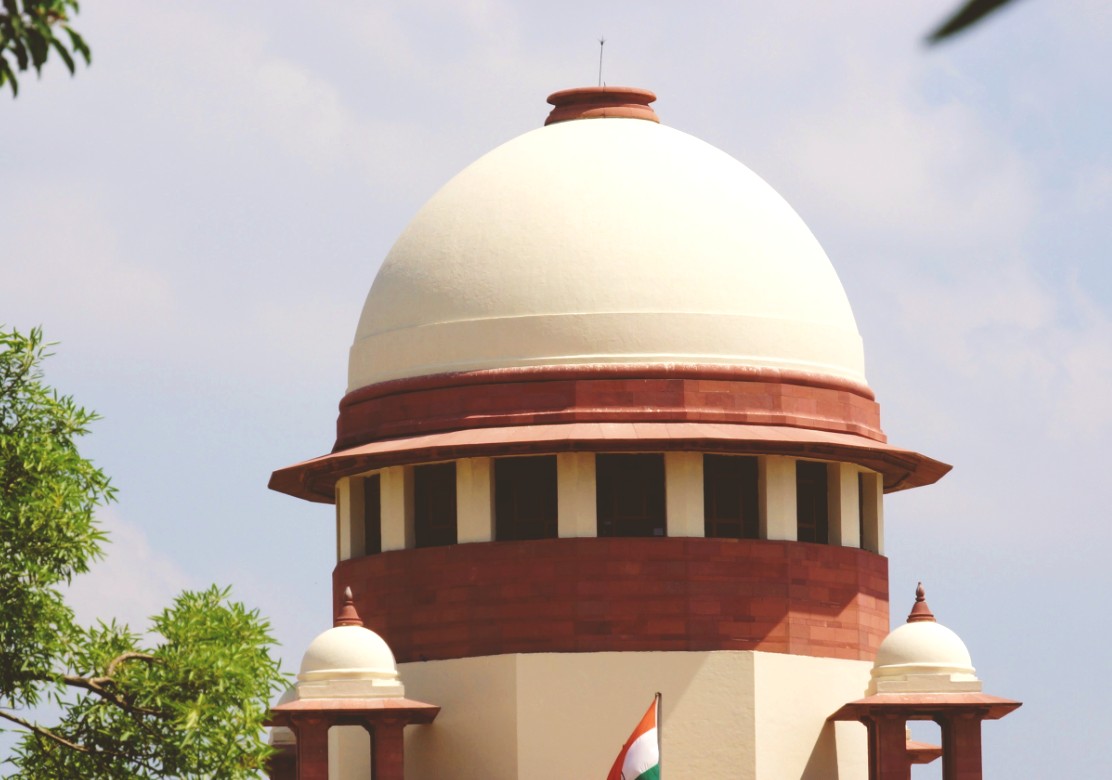Haryana Govt’s 2016 Notification specifying criteria for exclusion of ‘creamy layer’ within backward classes, is flagrant violation of judicial declaration made in Indira Sawhney-I: Top Court

Read judgment: Pichra Warg Kalyan Mahasabha Haryana (regd.) & Anr vs. State of Haryana & Anr
LE Correspondent
New Delhi, August 25, 2021: The Supreme Court has ruled that the Haryana Government’s 2016 notification specifying the criteria for exclusion of ‘creamy layer’ within the backward classes, is in flagrant violation of the directions issued by the SC in Indra Sawhney & Others v. Union of India & Others (Indra Sawhney-I) and is at variance with the 1993 memorandum issued by the Union of India.
The criteria mentioned for identifying such of those persons who are socially advanced have not been taken into account by the Government of Haryana while issuing the notification dated August 17, 2016, said the Top Court.
“Strangely, by the notification dated 17.08.2016, the identification of ‘creamy layer’ amongst backward classes was restricted only to the basis of economic criterion. In clear terms, this Court held in Indra Sawhney-I that the basis of exclusion of ‘creamy layer’ cannot be merely economic,” observed the Division Bench of Justice L Nageswara Rao and Justice Aniruddha Bose.
The Bench observed that in spite of Section 5(2) of the Haryana Backward Classes (Reservation in Services and Admission in Educational Institutions) Act, 2016 making it mandatory for identification and exclusion of ‘creamy layer’ to be on the basis of social, economic and other relevant factors, the State of Haryana has sought to determine ‘creamy layer’ from backward classes solely on the basis of economic criterion and has committed a grave error in doing so.
The observations came pursuant to a challenge against Notifications dated Aug 17, 2016 and Aug 28, 2018 issued by the State of Haryana (1st Respondent), as arbitrary and violative of Articles 14, 15 and 16 of the Constitution of India.
Going by the background of the case, the State Government issued a notification on Aug 17, 2016 specifying that the sections of backward classes earning above Rs. 6 lakh per annum shall be considered as ‘creamy layer’ u/s 5 of the 2016 Act.
Later, students aspiring to be admitted to MBBS course for the academic year 2018-2019 in the quota for backward classes filed writ in the High Court of Punjab and Haryana challenging such notification on the ground of sub-classification of backward classes, with preference in reservation given to a particular section of a backward class group.
The High Court thereon set aside the notification on the ground that the sub-classification of the backward classes was arbitrary and violative of Article 14 of the Constitution of India. The High Court also directed the counselling of students to be held afresh on the basis of the earlier criteria existing prior to the 2016 Act.
The State of Haryana questioned the correctness of the judgement of the High Court before the Apex Court, which was however declined. On the same day, the State Government issued a notification, whereby the criteria for computing annual income were fixed as ‘gross annual income’, which shall include income from all sources.
Accordingly, students who qualified in NEET-2018 and sought admission to MBBS and BDS courses in the backward classes quota, filed writ in the High Court, assailing the legality and validity of the notifications, but in vain.
The present petition was therefore filed seeking a direction to the Respondents to provide reservation to backward classes in Haryana under the Haryana Backward Classes Act, 2016 by considering the existing defined criteria of ‘creamy layer’ by the National Commission for Backward Classes or the criteria used by the State of Haryana prior to the 2016 Act.
After thoroughly examining the factors which were given emphasis in the various opinions rendered in Indra Sawhney-I for determining ‘creamy layer’ amongst the backward classes, the Apex Court held that persons from backward classes who occupied posts in higher services like IAS, IPS and All India Services had reached a higher level of social advancement and economic status and therefore, were not entitled to be treated as backward.
Such persons were to be treated as ‘creamy layer’ without any further inquiry, added the Top Court.
Accordingly, the notification dated Aug 17, 2016, giving liberty to the State Government to issue a fresh notification within a period of 3 months from August 24, 2021 after taking into account the principles laid down by the SC in Indra Sawhney-I and the criteria mentioned in Section 5(2) of the 2016 Act for determining ‘creamy layer’.
Sign up for our weekly newsletter to stay up to date on our product, events featured blog, special offer and all of the exciting things that take place here at Legitquest.




Add a Comment